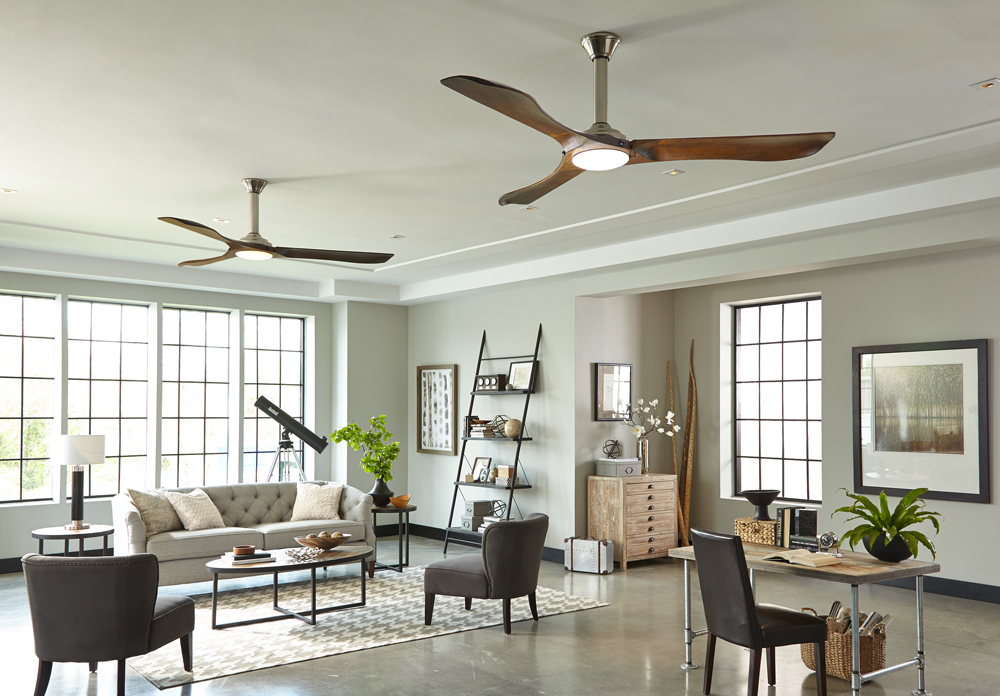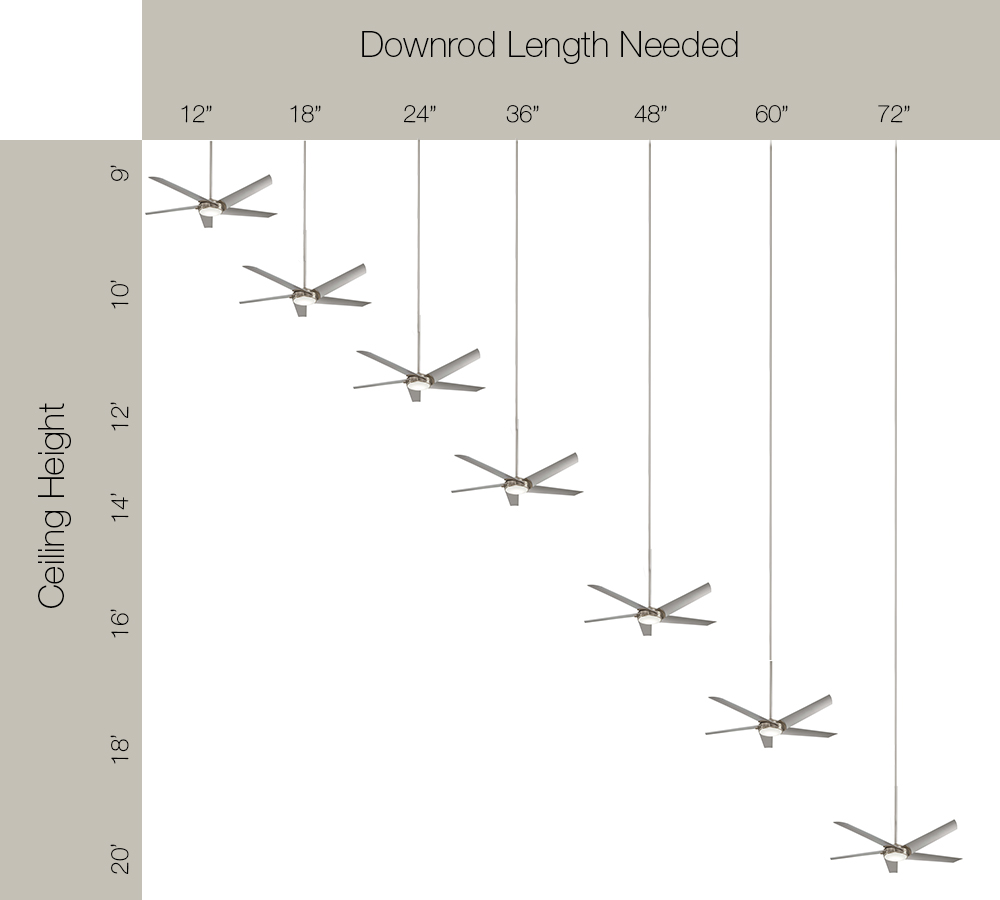Free Ground Shipping on Orders Over $49 Details & Exclusions Excludes Curb Side Delivery (LTL). Lower 48 United States Only.
Sep 9, 2013
Is Your Ceiling Fan Too Big?
Ceiling fans are sometimes looked over when decorating a home. Besides freshening a room, fans complete a room design and composition. It’s important to understand how size and height affect the fan’s efficiency and overall look of a room.
Can a Ceiling Fan be Too Big for a Room?
A ceiling fan that’s too big will overpower the room’s design and visually pull the ceiling downwards; a fan that’s too small won’t properly circulate the air.
 Featured: Fanimation Air Shadow Ceiling Fan
Featured: Fanimation Air Shadow Ceiling Fan
Follow these ceiling fan size guidelines for the right proportions.
Fan Size
| Small rooms less than 8 x 8 feet | 30-inch diameter fan or smaller |
| 9 x 9 feet to 12 x 12 feet | 41-inch to 50-inch diameter fan |
| 12 x 12 feet and 16 x 16 feet | 51-inch to 60-inch diameter fan |
| More than 16 x 16 feet | 61-inch to 70-inch diameter fan |
Your room may need two smaller ceiling fans instead of one big fixture. The ceiling fan’s effectiveness can only be felt if you’re standing directly under it or less than two feet outside the fan’s radius.
This drop in airflow means that a rectangular room with a fan in the middle will leave large sections of the room untouched by any breeze. A better alternative would be two ceiling fans, each one sized for half the room. This is especially true of houses with open floor plans, which may leave one room in view of a fan without enjoying any of its benefits.
A well-sized ceiling fan also requires the proper mounting system. Choosing a fan with the proper diameter is most of the battle, but a fan can still feel overpowering if it hangs too close to your head. The optimum height for best airflow is eight or nine feet from the floor.
 Featured: Monte Carlo Minimalist Max Ceiling Fan
Featured: Monte Carlo Minimalist Max Ceiling Fan
Ceiling Height
In most cases, a standard mount (3 to 5 inch downrod) is perfect, but you may need a flush mount for more clearance if you’re including an optional light. Ceilings higher than 8 feet require an extended mount to lower the fan to its optimum height. Use a sloped mount for angled or vaulted ceilings.
Be sure there is at least 7 feet of clearance under your ceiling fan blades. The standard 3.5″ – 6″ downrod should work in most 8 ft. ceiling installations. This will position the blades far enough from the ceiling to have enough “supply” air above the blades to provide good air movement. If greater floor to fan clearance is needed, some fans can use a low ceiling adapter without using a downrod. However, air movement is reduced using the low ceiling adapter.

Finally, consider your color scheme as you narrow down your options. If your room has standard 8-foot ceilings and you want to maintain an airy feel, a beautiful bronze ceiling fan with broad tropical blades will counteract your goal. Instead, consider something like the Casablanca Tribeca fan—a white fan that will fade into a white ceiling might be a better option. If the room could use an anchor point, a statement ceiling fan can be a great option. Our lighting vendors provide a stunning variety of styles so you can find just the right fit.



